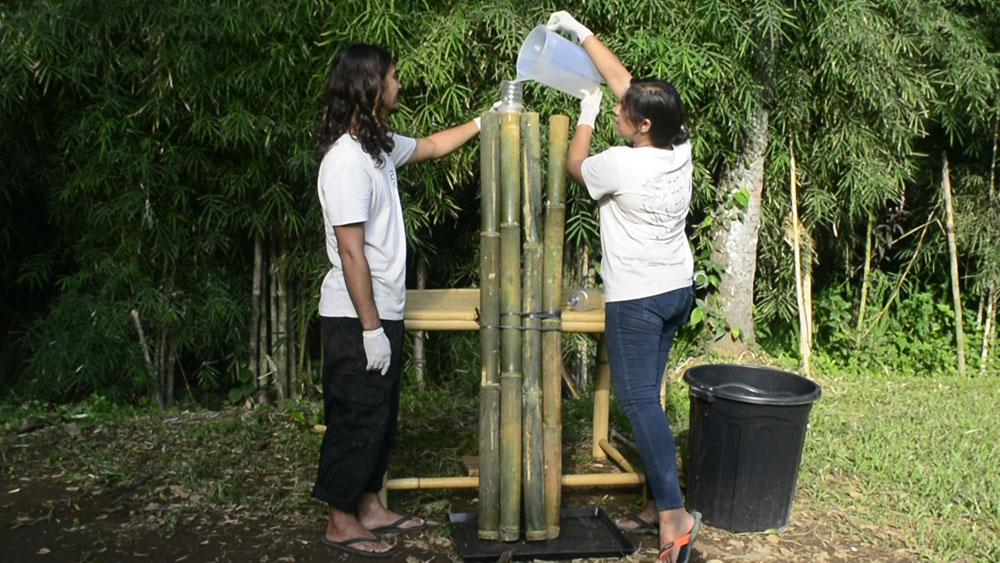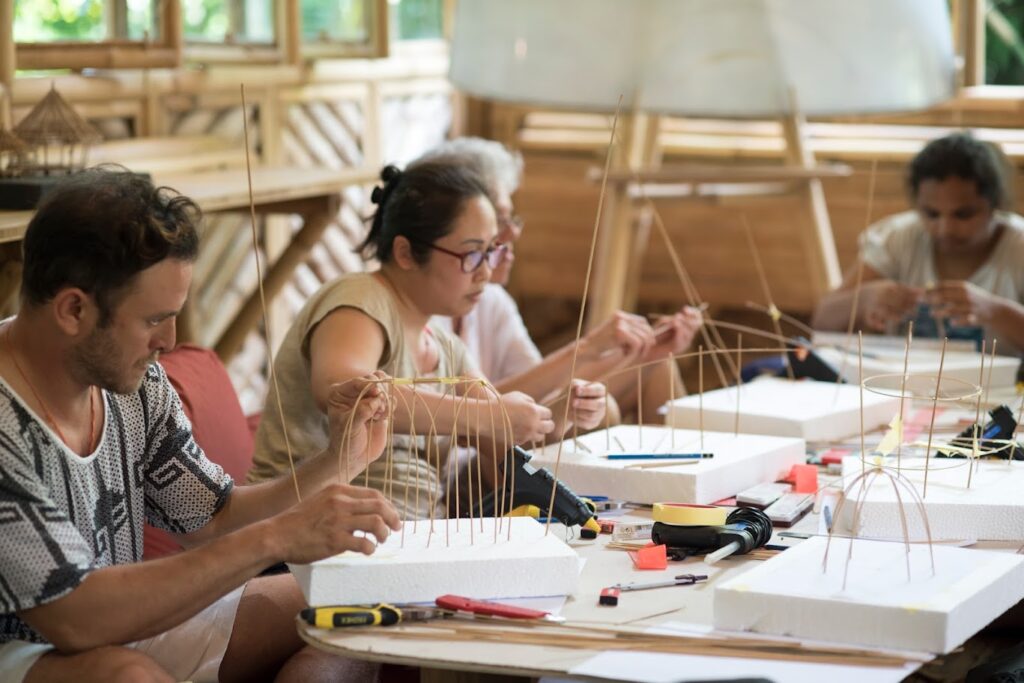5 Of The Best Bamboo Species To Use In Construction
By Mia Larsen | May 16, 2023 | Exploring Bamboo -

Out of around 1,600 bamboo species that have been identified worldwide, only a handful possess the unique characteristics that make them ideal for bamboo construction.
Different bamboo species offer their own distinct advantages; some species have large and straight culms, while some are smaller and more flexible. Some species’ curvy, imperfect nature offer unique aesthetic opportunities. It is therefore beneficial to be aware of the unique attributes of each species in order to choose the most suitable one for your bamboo project.
In this article, we will explore 5 of the most commonly used bamboo species in bamboo construction and their specific advantages. These include:
- Dendrocalamus asper
- Gigantochloa apus
- Bambusa blumeana
- Guadua angustifolia
- Phyllostachys edulis
Dendrocalamus asper | Bambu Petung
Dendrocalamus asper, or Bambu Petung as it’s known here in Bali, is a tropical and subtropical clumping bamboo that is native to Southeast Asia. Petung is the largest species of bamboo we use and can reach up to 30 meters in height, with diameters of up to 20 centimeters. Its strength, height, straight culms, and thick walls make it a great material for construction. Petung is used in most of our buildings, especially for reciprocal towers and columns. A distinct feature of Bambu Petung is the small golden-brown hairs visible on the lower nodes of the culms, which can help us to identify it. There is also a black version of this species, Dendrocalamus asper f. niger, which adds an elegant look to a bamboo building.

Gigantochloa apus | Bambu Tali
Gigantochloa apus, known as Bambu Tali in Bali, is another popular species used in bamboo construction. This tropical clumping bamboo is native to Southeast Asia and can grow up to 30 meters tall, with an average height between 8 and 22 meters. With its culms having a diameter of 4 to 13 centimeters, Bambu Tali’s light, medium-sized poles are very useful in construction projects. This species is highly flexible and can also be used to make bamboo ropes, this being very useful in the construction process. In fact ‘Tali’ actually means rope in the Bahasa Indonesia language. Bambu Tali is known for its long fibers and minimal tapering compared to other bamboo species. Due to its thin-walled culms, it makes an ideal material for creating lightweight structures such as fences, walls, and roofs. The bamboo's natural flexibility also makes it a good choice for creating curved and arched structures.

Bambusa blumeana | Bambu Duri
Bambusa blumeana, also known as Bambu Duri in Bali, or Thorny Bamboo colloquially, is a highly valued species in the construction industry, particularly in countries like Indonesia and the Philippines. This species is a clumping bamboo and is native to Southeast Asia. It can grow up to 25 meters tall with diameters of up to 20 centimeters, making it a medium-sized species. Bambu Duri has thick walls and due to its growth in dense clumps, its poles are less straight than other species and can be harder to harvest. While it is structurally sound, its irregularities and swollen nodes also make a visually striking aesthetic feature when cut into slices.

Guadua angustifolia | Guadua
Guadua angustifolia, or Guadua for short, is the most commonly used bamboo for construction in South America and is considered to be the strongest bamboo species in the world. Guadua is interesting because it grows as a mix of clumping and running bamboo. This is called a mix-podial bamboo, and in the case of Guadua, it grows as an open clumper up to five meters in distance. This fast-growing species does best in tropical climates but can withstand colder temperatures. It is one of the tallest types of bamboo, often reaching heights of 30 meters with diameters of up to 18 centimeters, and can be identified by its thick white bands and short stiff hairs on the nodes.

Phyllostachys edulis | Moso
Phyllostachys edulis (also called Phyllostachys pubescens), or Moso bamboo, is one of the tallest bamboo species globally and is the most common bamboo species used for construction in China. As a fast-growing, running bamboo, it can spread rapidly over a large area and be considered invasive. Moso thrives in warm, humid climates but can withstand temperatures as low as -20°C. Its culms are identifiable by the fine, soft hairs that grow on its culms and the two branches that grow from each node. Moso can grow up to 23 meters tall, with diameters ranging from 8 to 18 centimeters, making it very useful for heavy construction.

From the flexible and lightweight Bambu Tali used in Bali, to the strong and durable Guadua used in South America, each species of bamboo has unique characteristics which make it suitable for various construction applications. These are just a few of the many species of bamboo used around the world in construction, so make sure to research the bamboo species available to you in your local area.

Mia is an architectural designer from Australia with hands-on experience in bamboo building. Her passion for design, fueled by a deep desire for sustainable solutions, led her to join the Bamboo U team as a Student Visitor from March-August 2023 and as a content writer from 2025.
JUNE 13-24, 2025
The 11 Day Bamboo Build & Design Course in Bali
In 11 days, we'll show you how to build bamboo structures we’ll share all that it takes to build with nature.
Start Anytime
The Bamboo Harvesting Course
The Bamboo Harvesting Course is an online step-by-step training to harvest and care for your bamboo clumps to ensure their longevity and productivity. This maximizes the potential of this beautiful grass as a rapidly renewable resource.Whether you are an architect, builder, or sustainability enthusiast, this mini course will enable you to utilize this rapidly regenerative resource as a durable construction material.It will help remove any fear or doubt about the durability of bamboo and help you build reputable bamboo structures that stand the test of time!
















